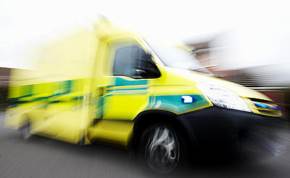Date:
20 April 2024
Page URL:
https://ntk.eastamb.nhs.uk/news/the-tips-and-tricks-for-safe-reversing.htm?pr=
The tips and tricks for safe reversing

With more than 245,800 miles of roads in Great Britain alone, vehicle accidents are bound to happen on occasion.
Here at EEAST it’s no different, but the vast majority of vehicle incidents we see are down to simple, low-speed accidental damage like:
- reversing incidents
- impacts at station or at hospital
- impacting a stationery vehicle.
Right now, we have more vehicles out of service as a result of accidental damage than normal, and most have happened whilst reversing.
Now ambulances aren’t exactly small – a chunky box weighing nearly five tonnes, it’s inevitably going to be a bit more tricky to steer and reverse than your standard family hatchback. But there are some safety tips we can remember to make reversing-life a bit easier, and hopefully reduce the number of incidents we have.
- Plan your manoeuvre: Look around the area to find the best location to turn the vehicle. Look out for obstacles and hazards.
- Be seen back: Whenever possible a second person should assist the driver in any reversing manoeuvre. When assisting, don’t wait to be asked to give help and when driving, don’t be afraid to ask the second person to get out of the vehicle. If someone isn’t available to help, check to see if there is another person who could assist, e.g. police officer, fire fighter or member of the public.
- Communicate: When being seen back, talk to each other. Plan where you are going initially and wind down windows so that instructions/questions can be shouted back and forth. Use the hand signals demonstrated on the driving course. If you are not sure of these, contact your DLO or the driver training unit.
- Observe: Look all around you, not just behind you. Wait for other road users. Stop, get out and have a look if you are not 100% sure of what’s behind you. Remember the ‘swing’ of the nose of the vehicle when reversing. Think about the height of the vehicle as well as length, overhanging gutters, trees or canopies can be obstacles. The tilt of the vehicle also needs to be considered, especially when reversing in drives etc.
- Don’t rush: Drive slowly and don’t be pressurised into rushing the manoeuvre by other road users. The slower you manoeuvre, the more time you have to correct any miscalculations.
- Be safe: The person assisting should wear high visibility clothing whilst helping the driver. If you are driving and you lose sight of your assistant or any other hazard, stop immediately and investigate before proceeding.
- Report any problems: If you do make contact with an object, make sure you report it appropriately and discharge any duty you may have under the Road Traffic Act for reporting damage/injuries.
Remember, if you do have an accident in a work vehicle, you still need to inform your private car insurer. Anyone taking out motor insurance has to declare certain information, including how many motor accidents they’ve had in the last five years – and accidents in a work vehicle are included in this. Failure to do this might invalidate your own insurance in the event of a claim.
If you have any queries on the above or any other driving issue, please contact either your DLO or the driver training unit at driver.training@eastamb.nhs.uk.
Published 20th April, 2017
